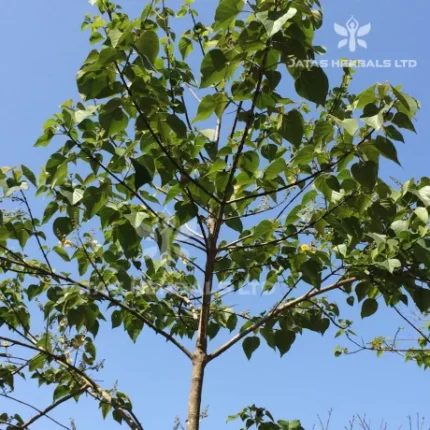Brihat Trayi used this herb extensively in therapeutics but Caraka included it in many of his ka¦Œya vargas. He also emphasized its utility among Rasayana drugs. Quoting Sushruta’s view Chakrapani detailed that “though the root of Yasthtimadhu is considered as the best, for virecana the fruits of two varieties of Yasthtimadhu shall be used”. Probably it is the reason for mentioning Klitaka under Phalini varga. Controversial Studies– Caraka and Sushruta have used the term Klitaka twice each in their texts (C.S.Su.1/80; C.S.Vi.8/144; S.S.Ci.18/34 & S.S.Ka. 2/5). Thakurji is of the opinion that the names Klitaka, Klitanaka and Kliakaa are derived from the root derivations (Vyutpatti). “obtained through purchase of foreign imports”. Klitaka is included under virecana drugs (C.S.Su.1/80). Ragarding the utility of Klitaka seeds for purgation we do not find any reference about the fruits or seeds of Yasthtimadhu in the literature as well as in vogue. On the other hand Nili seeds are possessing this property. An aquatic variety of Nili (KhaÎaguli) identified with Sesbania bispinosa or Astercantha longifolia is known in practice for purgation. More over, the poisonous root plant called Klitaka in S.S.Ka. 2/5 remains to be identified.
Different varieties–Caraka described two varieties of Yashtimadhu viz., Anµupa and Sthalaja. Late Kaviraj Virajacaran Shuklaji explained the former as growing at places which are nighantus in water supply while the later one may be growing at places devoid of water (less water supply). Unani Medicine quotes three varieties viz., Egypt (Misariya), Arabic and Turkish. The first variety is considered as the best.
Botanical Description– A hardy herb or undershrub, growing to a height of 1.8 m. Root- thick, many branched, red or lemon-colour outside and yellowish or pale-yellow inside. Leaves- imparipinnate; leaflets 4-7 pairs, ovate-lanceolate, smooth. Flowers- axillary spikes, papilionaceous, lavender to violet in colour. Fruits- pods, compressed. Seeds- 2-5, reniform, flat, deep grey. (Flowers in March and fruits in August).
Distribution– Cultivated in Jammu & Kashmir, Punjab and sub-Himalayan tracts.
Major chemical constituents– Glycyrrhizin (principal sweetening agent), glycyrrhizic acid, glycyrrhetinic acid, liquirtin, isoliquiritin, neoisoliquiritin, liquiritogenin, isoliquiritogenin, glabrine, glabranine, licuraside, licochalcones A & B, hispagla-bridin A & B licoricidin, glabrene, liquiritic acid, glabrolide etc.
Part Used– Root
Dosage– Powder 3-5 g.
Research–
(1) Glycyrrhizin showed anti-arthritic and anti-inflammatory effect on formaldehyde-induced rat-paw oedema in adrenalecti-mized rats. It was found to potentiate the anti-arthritic action of hydrocortisone in rats (Gujral et al., 1961a).
(2) The anti-inflammatory activity of glycyrretic acid and its diacetate was similar to that of hydrocortisone on formalin-induced arthritis in albino rats (Tangri et al., 1964).
(3) Glycyrrhetic acid protected guineapig against bron- chospasm induced by histamine or 5-HT. It significantly lowered plasma corticosterone concentration although adrenal weight remained unaltered. (Tangri et al., 1968).
(4) The oral administration of powdered root in 5 cases of pemphigus, who had been kept free from the bullae with prednisolone, could considerably reduce the dose of prednisolone without reappearance of the lesions (Saxena et al; 1965a).
(5) The anti-inflammatory response of G. glabra was found to be I to that of oxyphenbutazone. It appeared to possess a more potent anti-pyretic and anti-exudative activity in comparision to oxyphenbutazone (Saxema et al; 1970).
(6) Glyayrrhizin showed a significant antidiuretic effect in rats and rabbits on oral and parenteral administration (Gujral et al; 1961 c).
(7) Glycyrrhetinic acid drops were found to be of definite therapeutic value on 32 cases of allergic conguctivities both in acute and chronic cases (Saxena et al; 1965 b).
(8) Glycyrrhetic acid showed an antipyretic activity similar to that of sodium salicylate on rectal temperature of normal and pyretic rats (Saxena & Bhalla, 1968).





Reviews
There are no reviews yet.